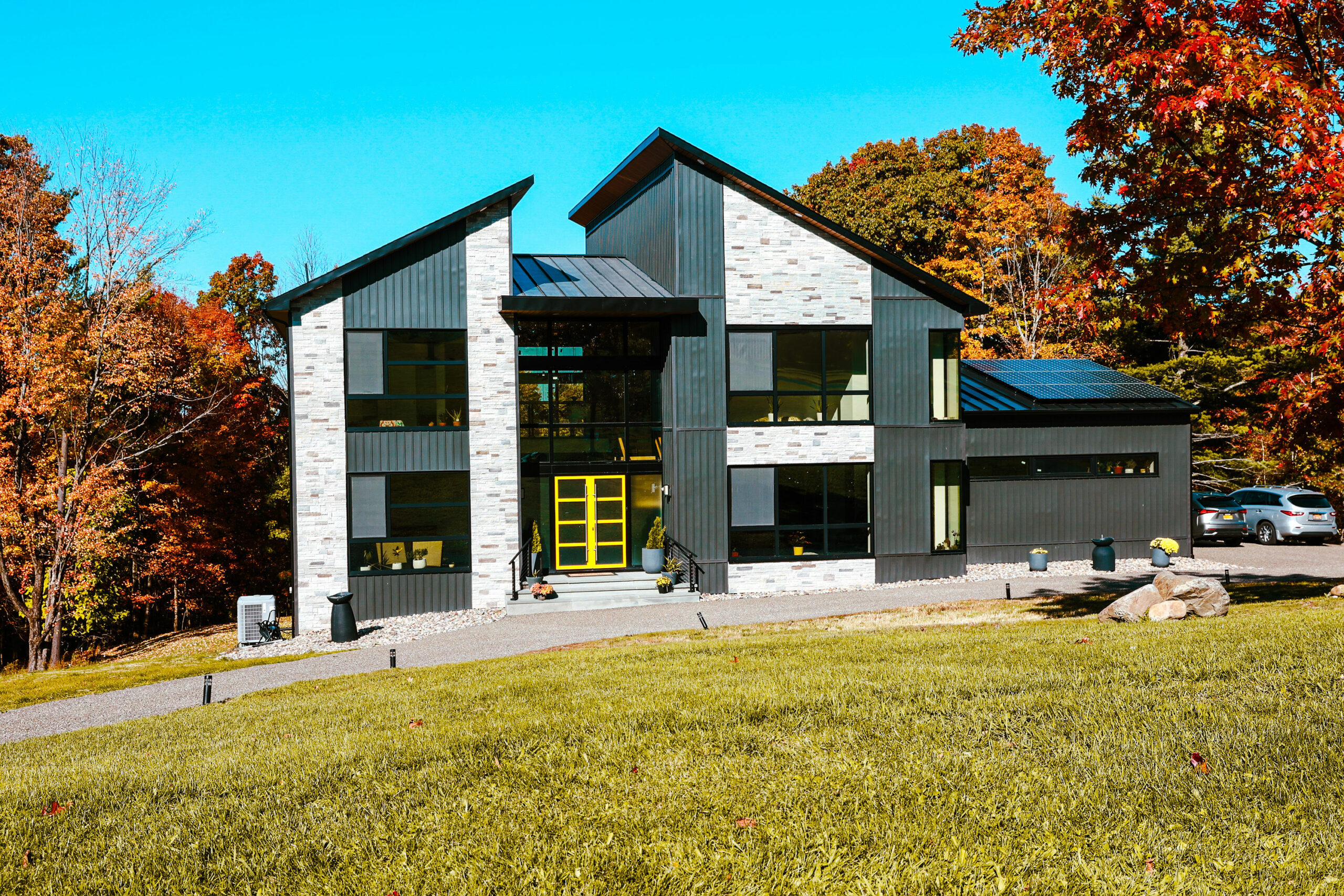VITAL STATS
| Certification Status | Zero Energy Certified |
| Version | 1.0 |
| Location | East Greenbush, New York |
| Typology | Existing Building |
| Gross Building Area | 5600 SF |
| Start of Occupancy | February 2021 |
| Owner Occupied | Yes |
| Occupancy Type | Residential |
| Number of Occupants | 3 |
PROJECT TEAM
| General Contractor | Baani Singh |
| Architect | Baani Singh |
| MEP | Bourque Mechanical |
| Interior Designer | Baani Singh |
| Civil Engineer | Brett Steenburg |
| Structural Engineer | Michael Kenneally |
RENEWABLE PRODUCTION SYSTEMS INFORMATION
ENERGY PERFORMANCE
| Renewable Type | Solar Electric (PV) |
| Total Renewable Capacity | 15.1 kW |
| Renewable Location | On-site |
PROJECT LEADERSHIP AND STORY OF THE PROJECT
While designing this house, the architect’s first thought was that being a sustainable architect, she wants to lead by example. Sustainable living and sustainable design is more than her passion. She considers it her second faith. Sikhi, her religion, teaches “Air is my teacher, water is my father and earth is my mother always nurturing me” (Guru Nanak, Japji). With that thought, the architect and her family decided we will construct a house that is sustainable, zero energy, universal design, low or no toxins, with equity during design and construction process.
DESIGN PROCESS
During the design process, d2d team designed based on NYSERDA and DOE guidelines for zero energy, IAQ plus, water sense requirements. d2d designed both with wood construction and ICF envelope, ground source heat pump and air source heat pump and analyzed using eQuest and HERS energy model. During construction, the team had to change from ground source to air source and had to change gable ends to wood with soy based closed cell foam. These changes were due to lack of skilled labor, contractor issues and Covid.
ENERGY LESSONS LEARNED
Insulated concrete forms ICF was not ideal for the project as there was a lot
of workmanship issues creating construction delays, moisture issues, and construction
cost increase (all corrected before occupancy). Additionally concrete is very carbon
intensive and would not be used this way on future projects. Insulating wood framed
construction would have solved the envelope issues.

